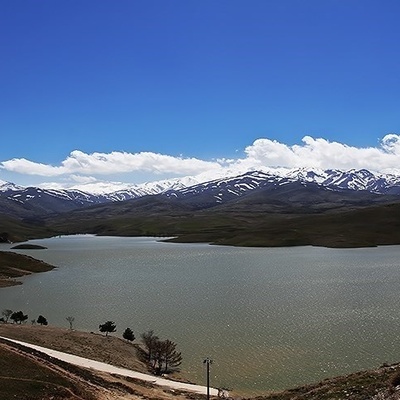SAEDNEWS: Qalat Village, nestled in the heart of Shiraz County in Fars Province, offers a captivating blend of ancient architecture, lush natural beauty, and spiritual tranquility, making it a must-see destination for cultural travelers and nature enthusiasts alike.

Located in the Central District of Shiraz County, Fars Province, Qalat Village (also spelled Qal’eh or Ghalat) is part of the Derak Rural District. According to the 2006 national census, Qalat had a population of 2,613 across 697 families. Today, it has become one of the most popular weekend getaways for locals in Shiraz, as well as a prominent travel destination for domestic and international tourists visiting the area.













The name "Qalat" means "castle" or "fortress" in Persian, and the village is situated on the northwestern slopes of Mount Derak, about 36 km from Shiraz and 22 km from Sadra. This scenic village features ancient alleys lined with stone houses and old staircases that wind through the narrow paths, often adorned with local handicraft stalls. With its tall trees, flowing river, and traditional homes, Qalat exudes an old-world charm. The old church and historic bathhouse enhance its unique character, and the summer climate adds to its appeal for weekend escapes.








One of the key attractions of Qalat is its picturesque waterfall, located on the village's northern outskirts. This natural feature sits on a gentle slope and includes two waterfalls: a small one visible near the entrance path, and a larger one requiring a hike through rocky terrain, which can be challenging in spring due to water flow. The falls are surrounded by walnut, oak, and almond trees, and during spring and summer, the area is lush with various grasses and native plants, creating a vibrant natural setting.

Qalat is home to a centuries-old stone church that dates back over 200 years to the Qajar era. This church was once the spiritual center for European residents and missionaries who lived in the village, and it played a key role in providing services to Christians in the surrounding area. Today, it is one of the few remaining churches in rural Fars, located in the higher part of the village and built with stone and mortar. Though much of it has collapsed, the ruins, adorned with colorful frescoes, still reflect its former grandeur. Locals refer to it as the “Castle Church.”

Another historical gem in Qalat is its old public bathhouse, located in the lower part of the village. Built during the Qajar era with stone, mortar, and brick, this small structure is one of the few historical bathhouses still standing in the region. Its design includes a simple entryway, a changing room, and the main bathing area. Despite its modest size, the bathhouse remains a valuable part of Qalat’s architectural heritage.
As a popular weekend destination, Qalat offers a variety of street food and snacks, especially on Fridays and holidays. While the village does not feature a wide range of sit-down restaurants, visitors can find small eateries and home-based vendors selling local dishes such as ashe reshteh (Persian noodle soup), ash-e doogh (yogurt soup), and grilled corn. These offerings provide an authentic taste of Fars Province cuisine.
Spring and summer are the best times to visit Qalat, especially from mid-April through early autumn. The village’s high elevation gives it a mild summer climate, making it a perfect retreat from Shiraz's heat. In spring, the landscape is green and vibrant, while autumn offers colorful foliage. Winters are cold and snowy, though the village maintains its charm year-round. Visitors should wear sturdy shoes due to the village’s rocky terrain and be prepared for changes in elevation.
Qalat is easily accessible from Shiraz by private car or taxi. From downtown Shiraz, head toward the city's northwest entrance and take the Sadra-Qalat road. Once you reach Sadra, follow the main road until you see signs directing you to Qalat. A taxi ride from Shiraz to Qalat typically costs around 50,000 toman. Alternatively, visitors can use city buses to Sadra and transfer to a local vehicle for the final leg of the journey.

